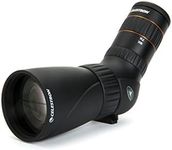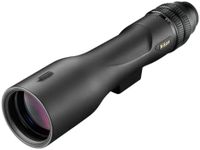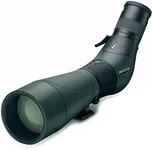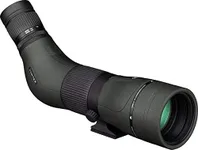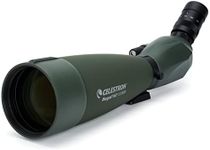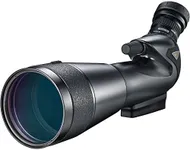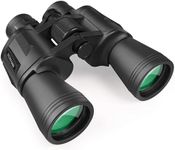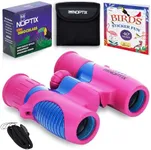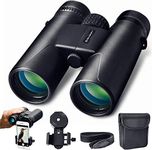Buying Guide for the Best Spotting Scopes
When choosing a spotting scope, it's important to consider your specific needs and how you plan to use the scope. Spotting scopes are used for a variety of activities such as bird watching, hunting, target shooting, and nature observation. The right spotting scope for you will depend on factors like magnification, objective lens size, field of view, and other features. Understanding these key specifications will help you make an informed decision and ensure you get the best scope for your needs.MagnificationMagnification refers to how much closer an object appears through the scope compared to the naked eye. This is important because higher magnification allows you to see more detail at greater distances. Spotting scopes typically have magnification ranges from 15x to 60x. Lower magnification (15x-30x) is suitable for general observation and provides a wider field of view, making it easier to locate objects. Higher magnification (30x-60x) is ideal for detailed viewing of distant objects but can result in a narrower field of view and may require a tripod for stability. Choose a magnification range based on your primary use; for example, bird watchers may prefer lower magnification for scanning large areas, while target shooters might need higher magnification for precise detail.
Objective Lens SizeThe objective lens size is the diameter of the front lens of the spotting scope, measured in millimeters. This spec is important because a larger objective lens allows more light to enter the scope, resulting in a brighter and clearer image, especially in low-light conditions. Common sizes range from 50mm to 100mm. Smaller lenses (50mm-60mm) are more compact and lightweight, making them easier to carry and handle, but they may not perform as well in low light. Larger lenses (80mm-100mm) provide better image quality and brightness but are bulkier and heavier. Consider where and when you'll be using the scope; if you need portability, a smaller lens might be better, but for stationary use in varying light conditions, a larger lens is preferable.
Field of ViewField of view (FOV) is the width of the area you can see through the scope at a specific distance, usually measured in feet at 1,000 yards. This spec is important because a wider field of view makes it easier to locate and track moving objects. Spotting scopes with lower magnification generally have a wider field of view, while higher magnification narrows the field of view. If you need to scan large areas or follow fast-moving subjects, a wider field of view is beneficial. For detailed observation of stationary objects, a narrower field of view may be acceptable. Choose a field of view that matches your activity; bird watchers and nature observers often prefer a wider FOV, while target shooters may prioritize other specs.
Eye ReliefEye relief is the distance from the eyepiece to your eye where you can still see the full field of view. This is important for comfort, especially if you wear glasses. Longer eye relief (15mm or more) allows you to see the entire image without having to press your eye close to the eyepiece, which is more comfortable for extended viewing sessions. Shorter eye relief can be uncomfortable and may not provide the full field of view for eyeglass wearers. If you wear glasses or plan to use the scope for long periods, look for a spotting scope with longer eye relief to ensure a comfortable viewing experience.
Lens CoatingLens coating refers to the special coatings applied to the lenses to reduce glare and improve light transmission, resulting in clearer and brighter images. This is important because better light transmission enhances image quality, especially in low-light conditions. There are different levels of lens coating: single-coated, fully-coated, multi-coated, and fully multi-coated. Single-coated lenses have a basic anti-reflective coating, while fully multi-coated lenses have multiple layers of coatings on all air-to-glass surfaces, providing the best image quality. For the best performance, especially in challenging light conditions, choose a spotting scope with fully multi-coated lenses.
Waterproof and FogproofWaterproof and fogproof features ensure that the spotting scope can withstand harsh weather conditions and prevent internal fogging caused by temperature changes. This is important for maintaining clear visibility and protecting your investment. Waterproof scopes are sealed to prevent water from entering, while fogproof scopes are filled with nitrogen or argon gas to prevent internal fogging. If you plan to use your spotting scope in varying weather conditions or in humid environments, look for models that are both waterproof and fogproof to ensure reliable performance.
Weight and PortabilityWeight and portability refer to how easy it is to carry and handle the spotting scope. This is important if you plan to take the scope on hikes or travel with it. Lighter and more compact scopes are easier to transport and handle, but they may have smaller objective lenses and lower magnification. Heavier scopes often have larger lenses and higher magnification, providing better image quality but can be cumbersome to carry. Consider how you will use the scope; if you need to move frequently or cover long distances, a lighter and more portable scope is ideal. For stationary use, weight may be less of a concern.
